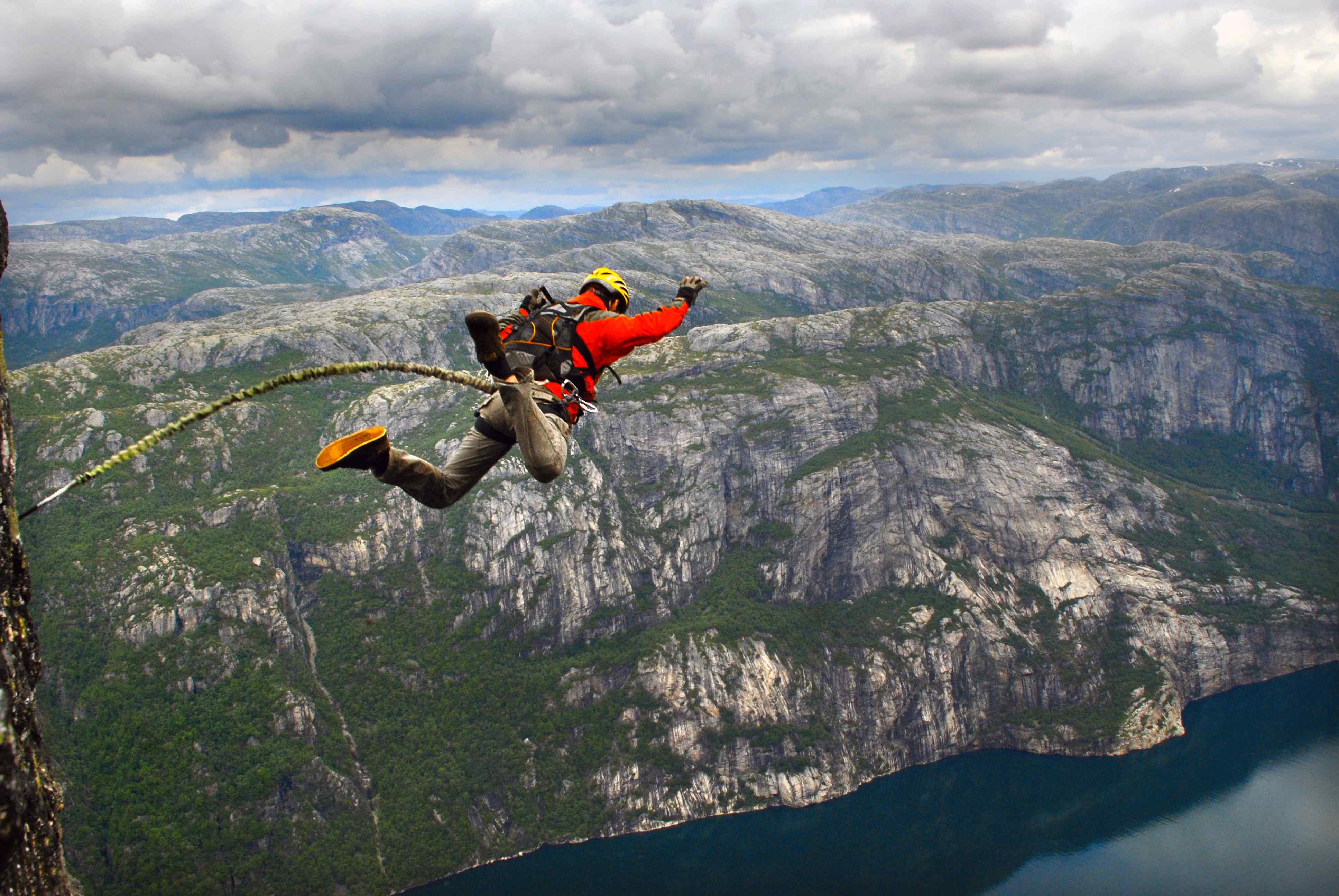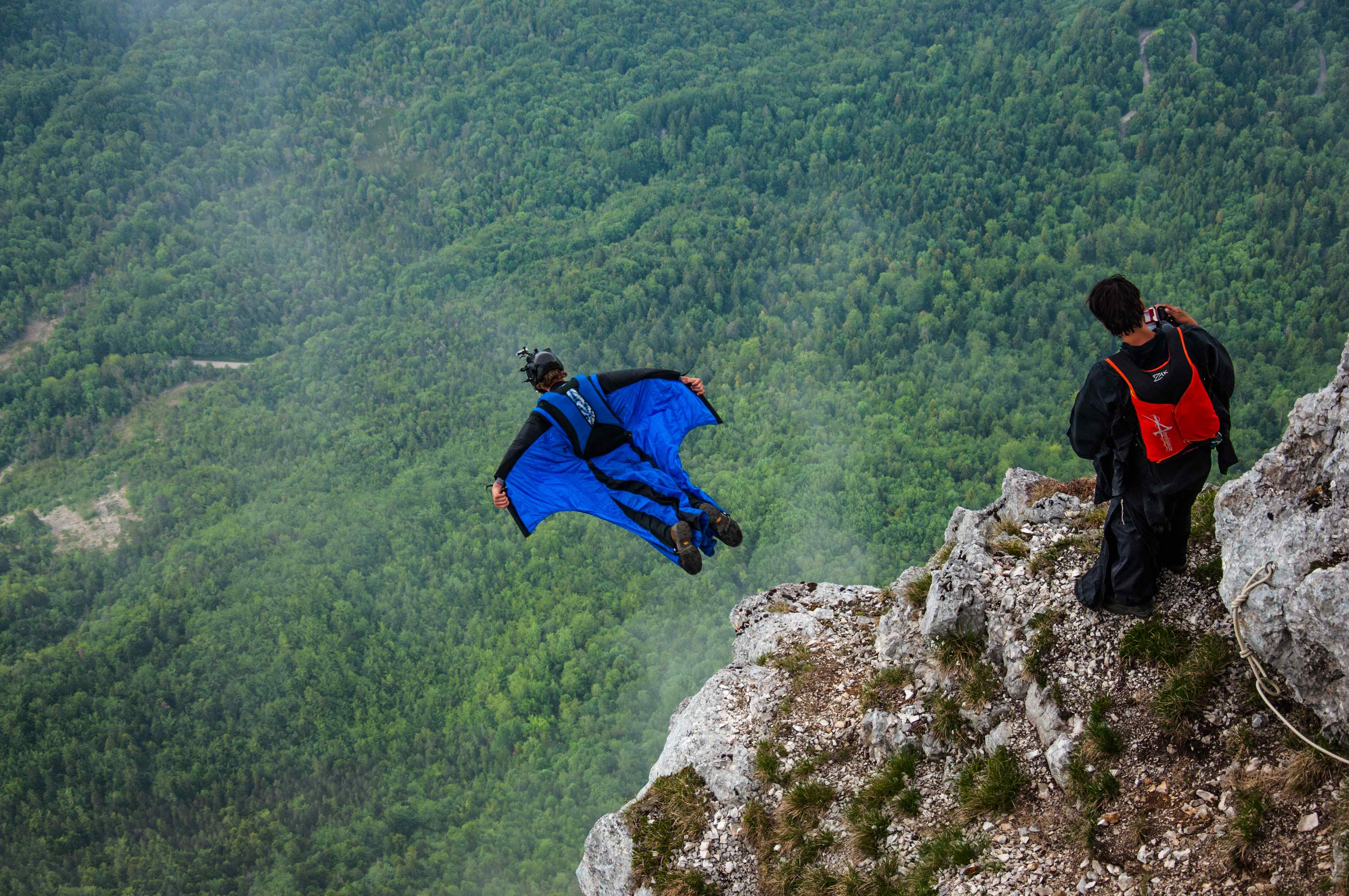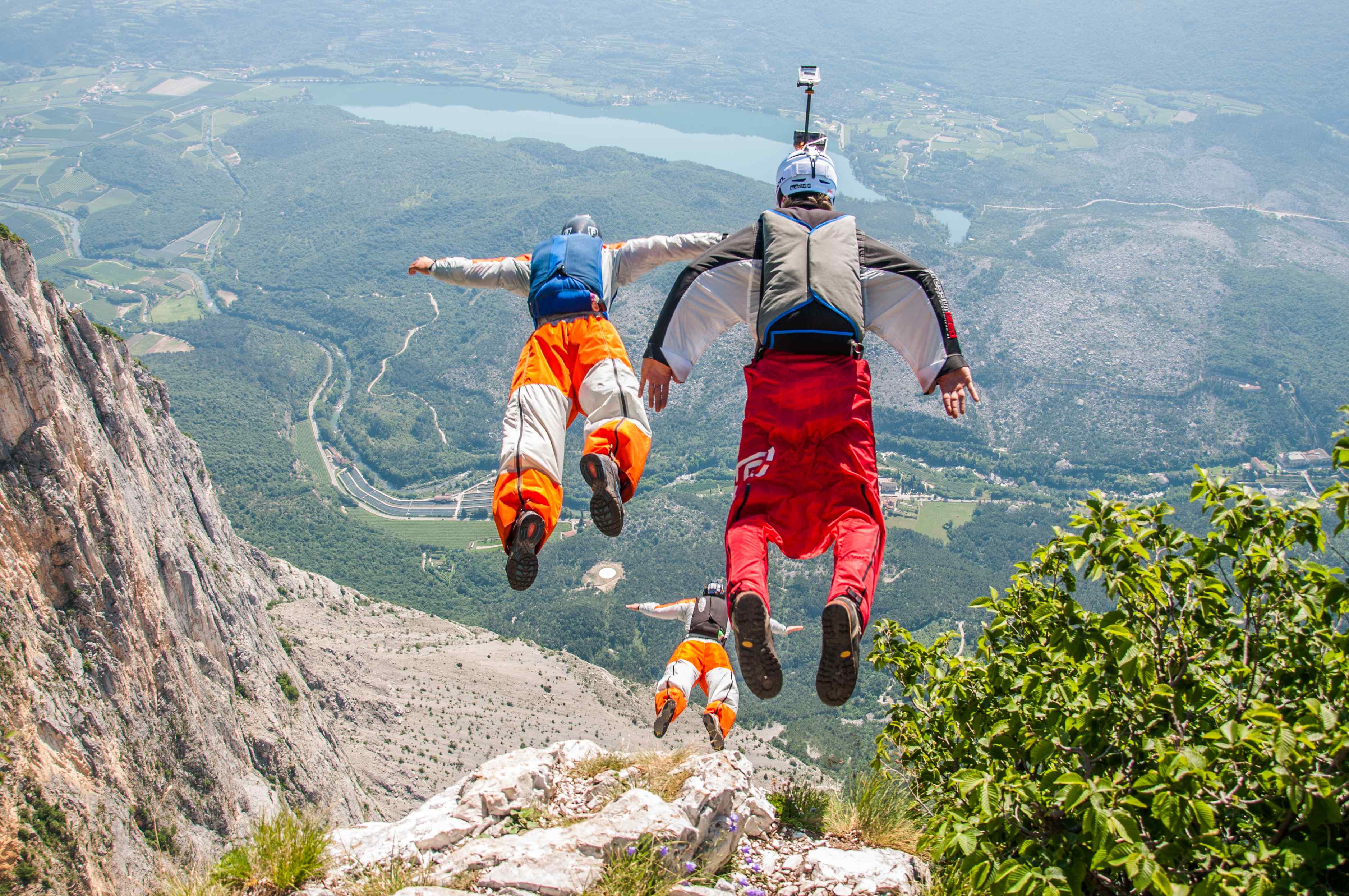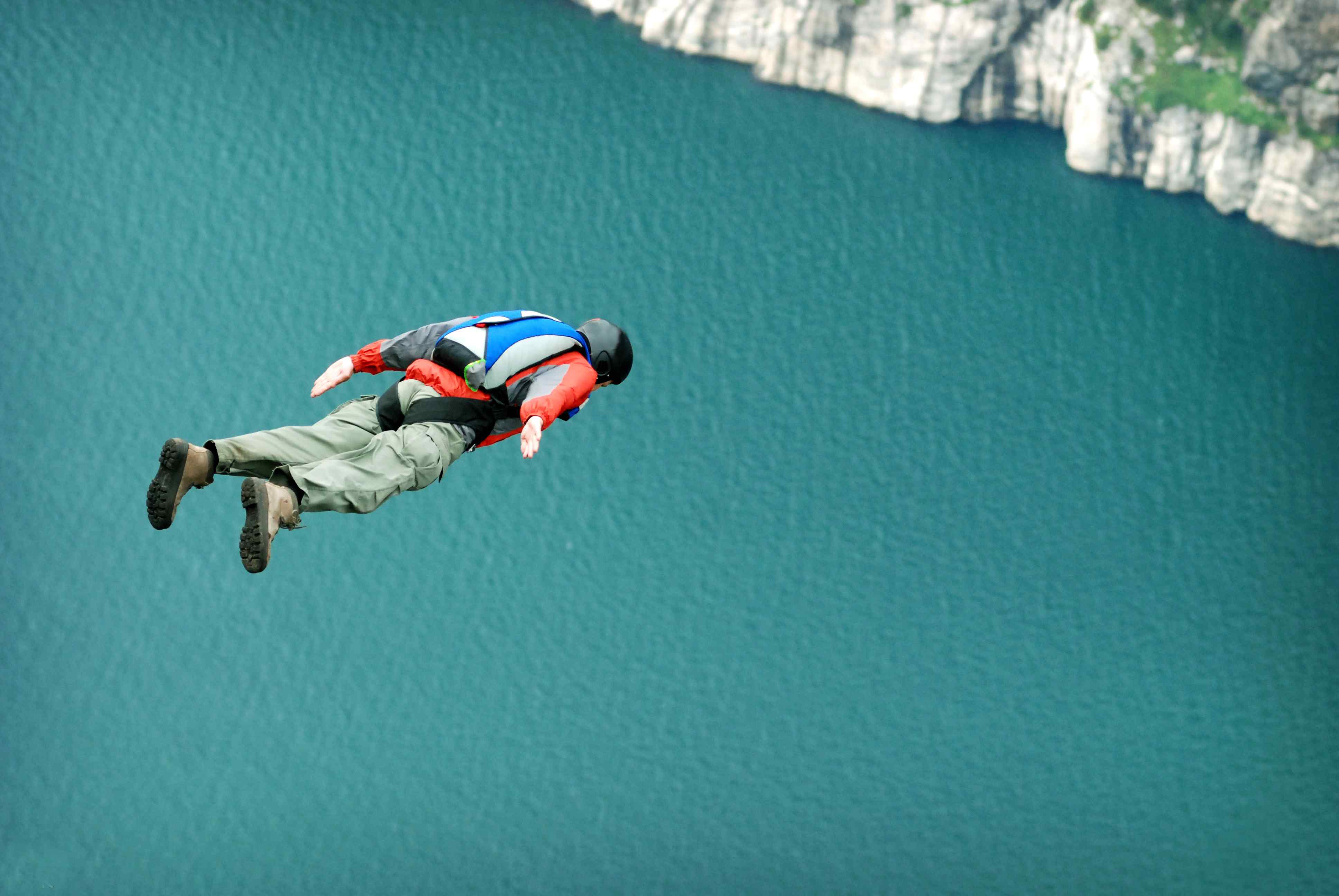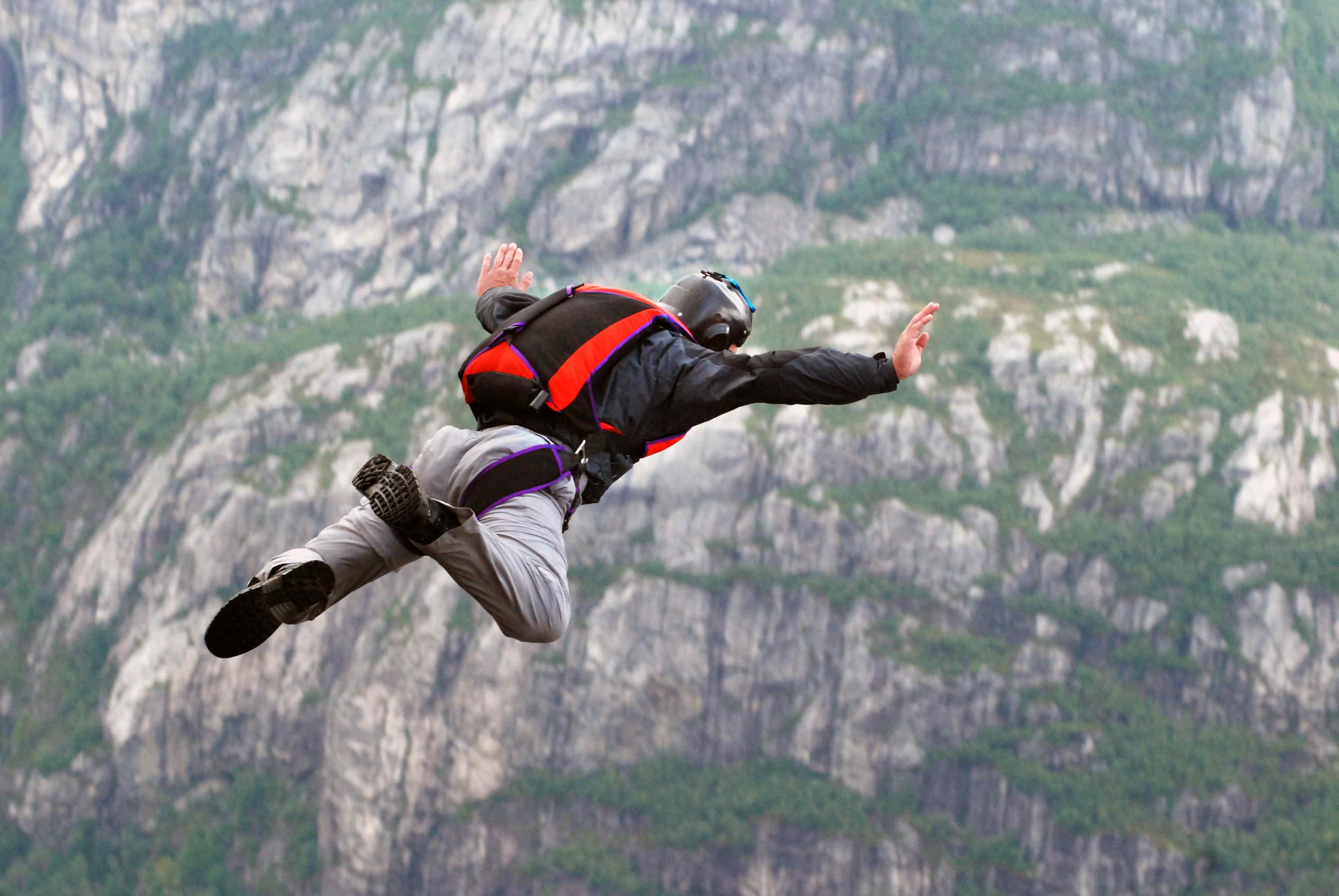Do you like the thrill of a fast-paced adrenaline rush? If so, then you may have considered BASE jumping, skydiving, and parachuting.
But how different are these three activities? Are they all the same thing?
Let's explore the differences between these three sports and help you decide which one is right for you!
BASE Jumping Vs. Skydiving
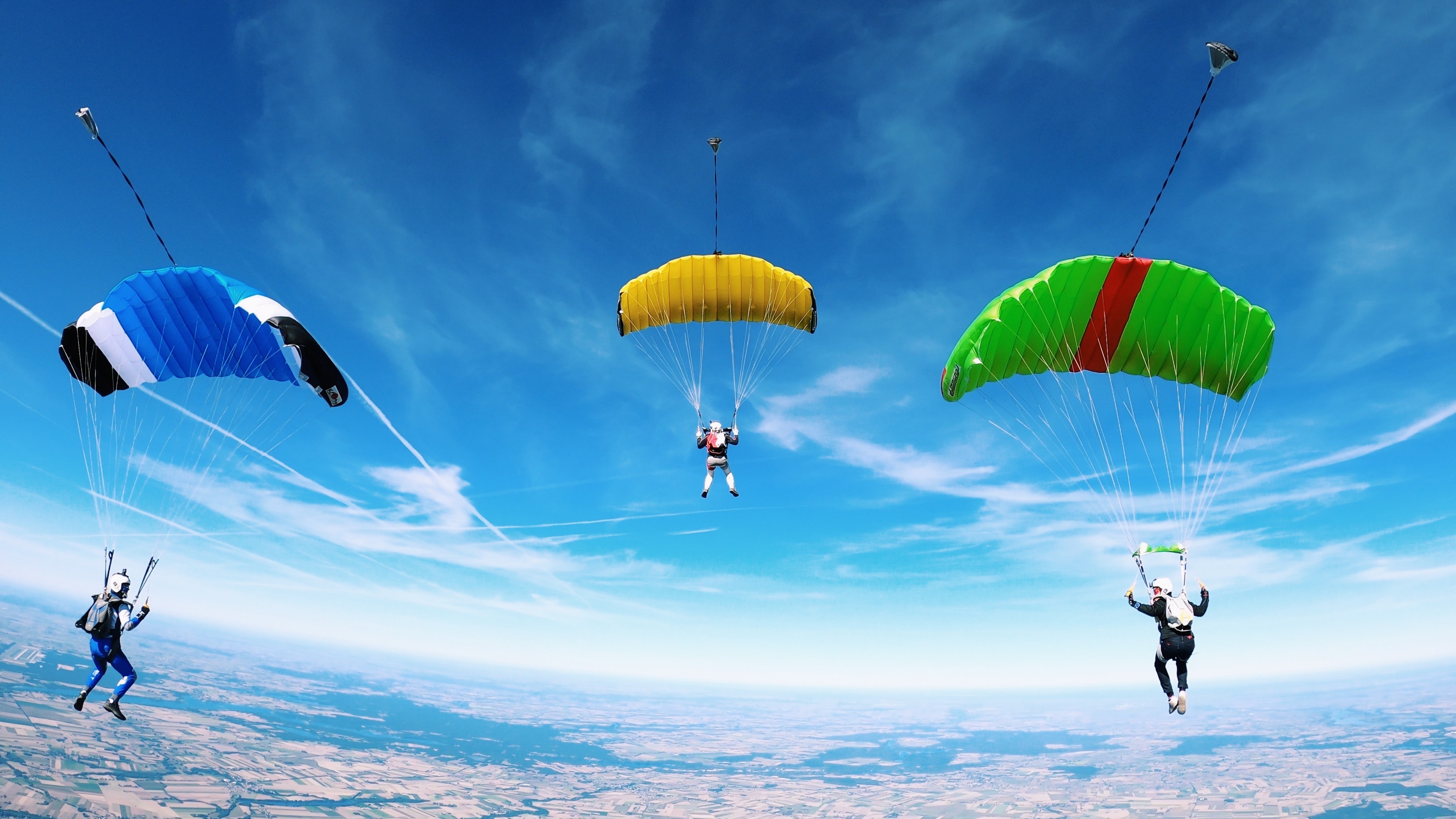
For an onlooker, any activity that involves jumping off a plane, cliff, or tall building is the same. That's why skydiving and BASE jumping are consistently used interchangeably.
But there is a big difference between the two sports! BASE jumping is considered an extreme sport because of the dangers involved. These dangers include low altitude, small landing areas, and obstacles on the ground.
On the other hand, skydiving is not as dangerous because you're jumping from a higher altitude and have more time to open your parachute.
Other distinctions they possess:
Number of Parachutes
BASE jumpers use a single-parachute system inside a simple fabric container.
It's not certified by any governing body and is the product of many years of evolution since the game was created.
It's a one-shot system because there isn't enough time for backup emergency procedures after a few seconds of freefall.
Meanwhile, skydivers have a considerably more stringent and complicated safety harness system on their backs.
A skydiving rig consists of the main parachute and a recommended automatic activation device that activates the reserve parachute if the jumper loses consciousness.
Before sport skydivers use them, all equipment is subjected to rigorous testing.
Jumps from Different Locations
A BASE jumper aims to jump from a fixed object- such as a cliff or bridge- and land on a safe area for both the jumper and spectators. The sport can only be done in specific locations around the world which have been deemed safe by experienced BASE jumpers.
On the other hand, Skydivers jump out of an airplane and can land almost anywhere, as long as they have a clear area to touchdown.
This is why BASE jumping is considered more dangerous- you're limited by where you can jump from and land.
Objectives
BASE jumping is typically done for fun or thrill-seeking purposes, while skydiving has both recreational and competitive objectives.
In BASE jumping, athletes typically compete to see who can make the most creative or difficult jumps.
Skydiving, on the other hand, has three main competitive disciplines- formation skydiving, freestyle skydiving, and canopy piloting.
In these competitions, athletes attempt to complete different tasks or stunts while flying their parachutes.
The Rules
Skydiving is a popular and regulated sport in the United States and across the world, with a strong emphasis on maintaining high safety standards.
There are places around the world where BASE jumping is legal. However, climbing something to jump off the top of it will often involve breaking a law or two. This is usually because of trespassing on private property.
BASE jumpers are usually responsible and unlikely to cause damage. However, even the most responsible people can get arrested for breaking the law.
Read more about the legality of BASE jumping
Skydiving Vs. Parachuting
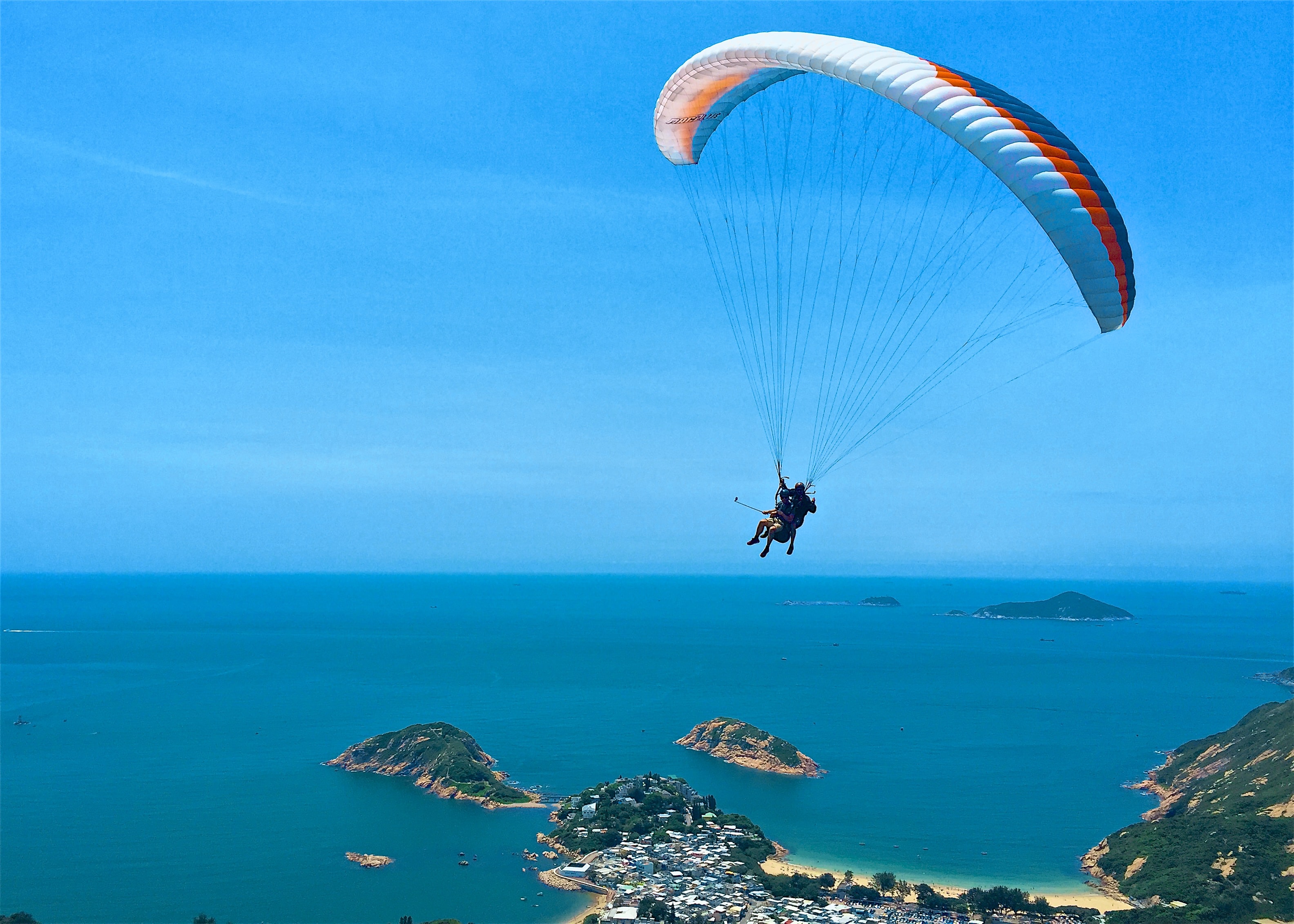
While skydiving and parachuting involve jumping out of an airplane and landing with a parachute, they have fundamental differences. Let's discuss some of them:
Altitude
Most people start their parachute jumps at around 5,000 feet. This is high enough to get good winds, oxygen levels, and temperature as you reach the ground.
On the other hand, Skydivers travel at a much greater speed (up to 120 mph) and acquire that speed rapidly when they are freefalling without a parachute.
This is why skydivers need a greater altitude to enjoy freefall fully.
Freefall
Depending on their jumping altitude, skydivers typically experience 30 to 90 seconds of freefall while unencumbered by any safety net.
They descend gradually, allowing them to enjoy the wind in their faces for a few minutes before touching down.
On the other hand, most parachuters release their chute soon after exiting the plane. This means they are in freefall for a reduced time and have a more controlled descent than skydivers.
Because the parachute is deployed so much sooner, it takes longer for a parachuter to hit the ground than a skydiver.
Solo Requirements
Parachuting doesn't require a lot of commitment to do a solo jump. This is because there are multiple ways to deploy the parachute. There are also other safety measures in place.
These days, there are even self-deploying parachutes that activate once the skydiver reaches a certain height!
However, skydiving is more strict because of the element of freefall. While being fun and exciting, freefall can be dangerous because you can reach speeds near terminal velocity.
Skydivers who use freefall techniques can also have automatic parachutes deployed, but things are different in freefall.
The jumper must be able to interpret an altimeter and other instruments while in the air, which is next to impossible without proper training.
Freestyle skydivers lack the experience to distinguish when it's time to let go of the chute with enough time to slow down before hitting the ground.
Objectives
These days, parachuting is typically done professionally by paratroopers and military personnel rather than as a pastime. Parachuters are frequently paratroopers who utilize their chutes to rapidly travel from the air to the ground.
Skydiving, on the other hand, is a more worthy leisure pursuit. In fact, it is considered a sport (and an "extreme sport") by people who pursue it professionally.
Sponsorships and teams are formed worldwide based on complex acrobatic routines that take place during freefall.
Parachute and skydiving have some areas of overlap in terms of training. The military uses high-altitude, low-oxygen (HALO) jumps as a covert method of deploying soldiers, and skydivers use them as an adrenaline-pumping event.
Parachuting VS. BASE Jumping
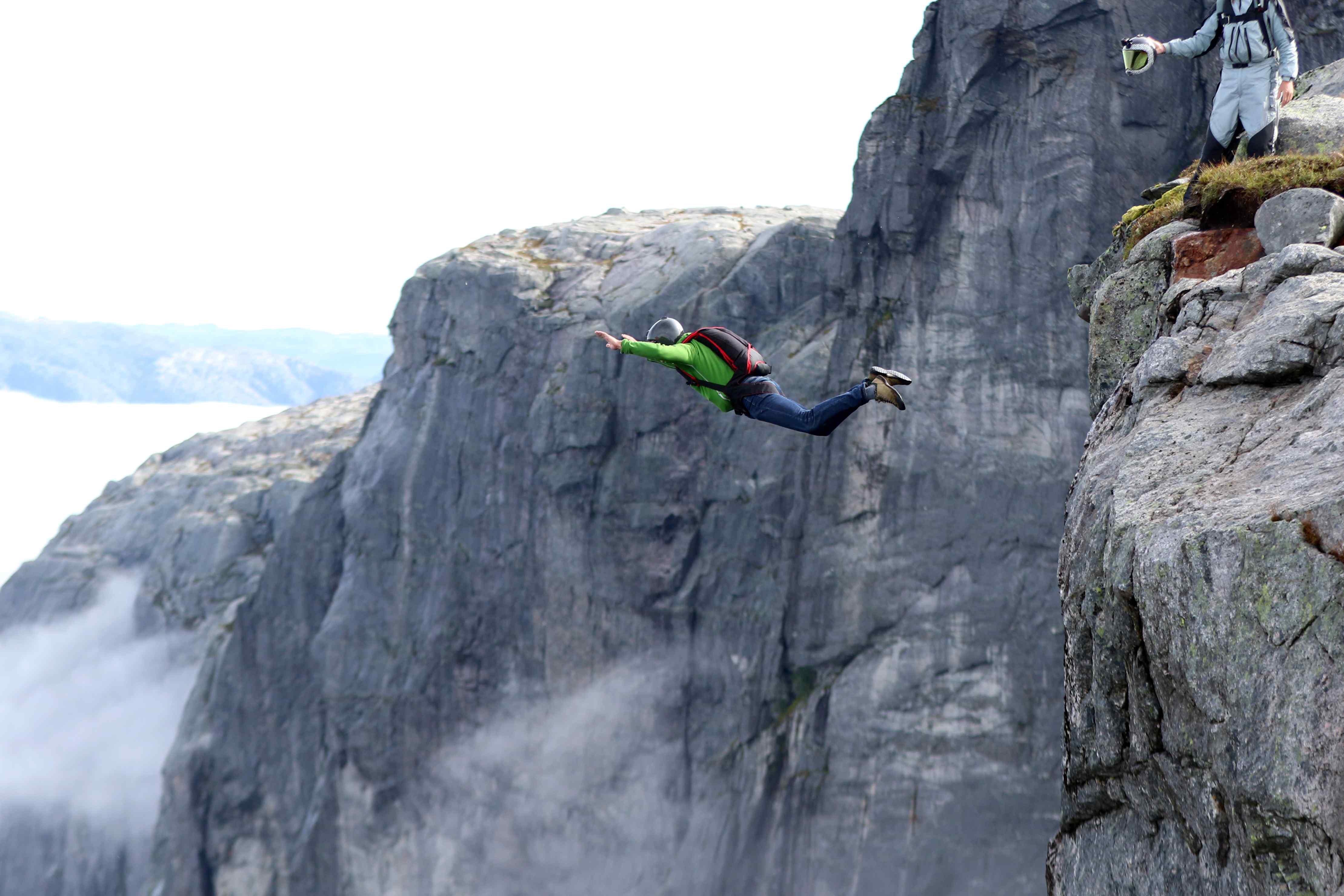
When it comes to BASE jumping and parachuting, BASE jumping takes the cake for being the most dangerous.
Because of the challenging altitudes and speed at which they jump, BASE jumpers have a much higher fatality rate than parachuters. In fact, for every 100,000 jumps, there are approximately 18 fatalities in BASE jumping as opposed to three fatalities in parachuting.
Here are other differences between the two:
Playing Surface
Parachuting is when you jump from a high point, like a plane, helicopter, or cliff. These elevated areas need at least 10,000 feet of altitude before descending to the ground.
Meanwhile, BASE jumping requires you to jump from a stationary object. You don't have to worry about the altitude as much because you're starting your jump from a lower point.
This makes BASE jumping a more accessible sport, but it also means that you're jumping from a less elevated area. This increases the chances of something going wrong during your jump.
Number of Jumps
There are typically three stages in BASE jumping: the exit, the flight, and the landing.
Parachuting only has two stages: the exit and the landing.
This is because parachuting doesn't require you to freefall as BASE jumping does. You can deploy your parachute at any time, which gives you more control over your descent.
Objectives
Parachuting is a popular hobby as well as a competitive and dangerous activity. The goal is to land safely after parachuting from a high elevation point to the ground.
For experienced parachuters, their objectives become more challenging as they perform stunts and acrobatics in the air while maintaining control of their descent.
Meanwhile, the main objective of BASE jumping is to reach the ground safely after jumping from a stationary object. This is a more dangerous sport because of the challenges associated with height and speed.
Rules
Parachuting follows a set of rules and regulations. These rules are in place to ensure that all parachuters are safe when descending from a high point.
Some basic rules include weight limits, age limits, and required training.
Here are the most essential parachuting regulations to keep in mind:
- The minimum age requirement is 18 years old.
- Weight limit must be between 200-250 pounds
- Participants must be familiar with all emergency procedures and how to react and execute if there is a failure.
- Check your gear before you jump.
Meanwhile, BASE jumping has no rules or regulations set by any governing body. Basically, BASE jumpers just have a general understanding to "not kill each other."
Because of the inherent dangers in BASE jumping, fatalities are more common, and there is less structure than parachuting. This means that there is more room for error and that jumpers must be responsible for their own safety.
Conclusion
BASE jumping, skydiving, and parachuting all have their own unique dangers and benefits.
It's important to understand the difference between these sports before deciding which one is right for you.
BASE jumping takes the cake for being the most dangerous, while parachuting and skydiving have lower fatality rates and follow a set of rules and regulations.
Ultimately, the choice between these sports comes down to personal preference. So, what's your poison?

